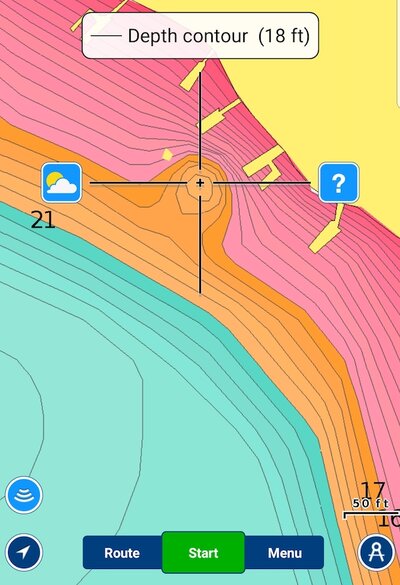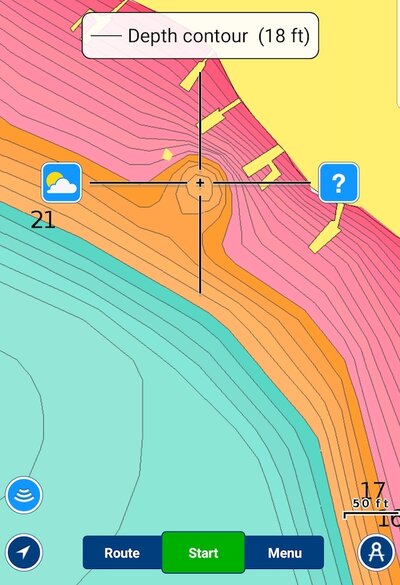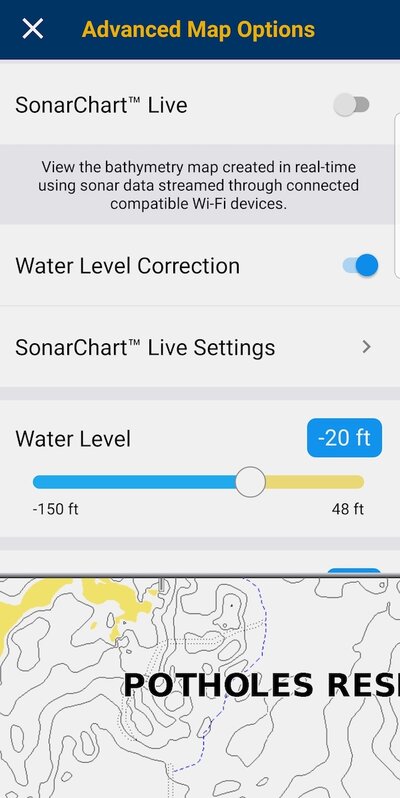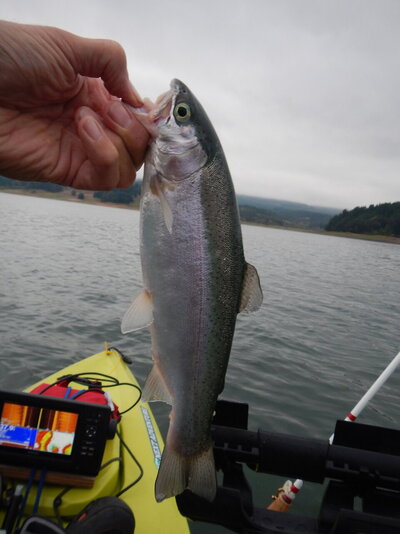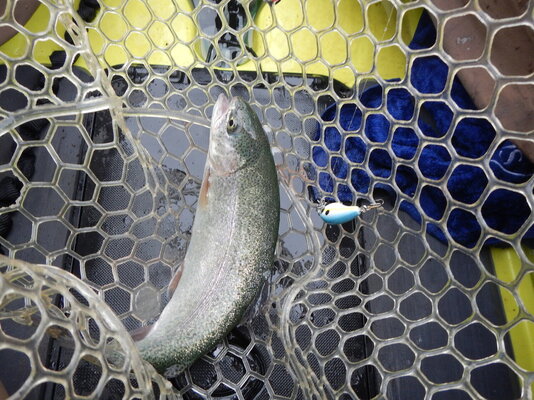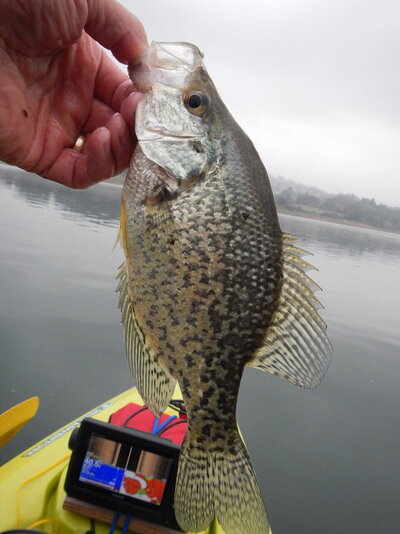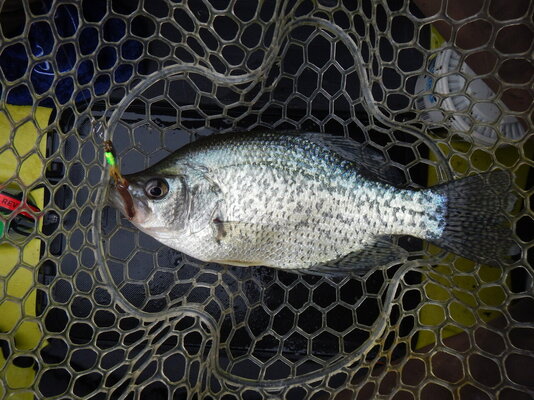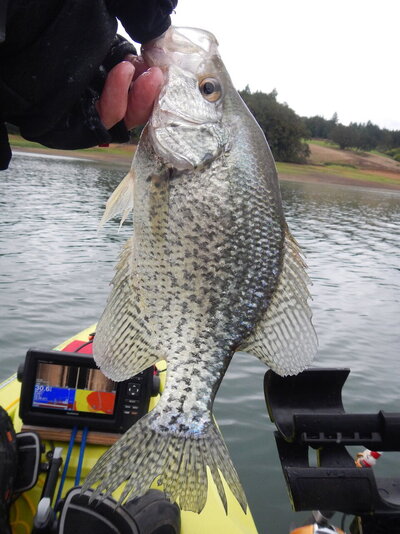I decided to hit Hagg this past Saturday for two reasons. My shoulder (torn labrum) was still sore from sturgeon fishing the weekend before and I had told
@pinstriper that the fishing should still be good at Hagg.
What kind of fisherman would I be not to make sure I was not full of hot air. I got to the Lakestop store around 6:45 and picked up a new annual pass and a couple of doughnuts - just the essentials.
I headed over to boat ramp C, got ready and launched. First thing on the agenda was to calibrate the heading sensor I added during the week. I got a heading sensor mostly for deep water bass fishing. It is nice to know the direction the boat is facing as you are drifting in current or being pushed by the wind. That took a few minutes to work out, but once it was calibrated it was really nice (comes in useful later in the story).
I started trolling where I had done well last time out (about a month ago). I trolled parallel to the boat ramp C side between Sain adn Scoggins. That turned out to be a bust for me. I was a little surprised that I did not get a single hit on two passes.
I thought perhaps the fishing are moving out over deeper water so I decided to troll along the no-wake buoys. That was definitely better than catching nothing and it did not take long to catch my first fish.
I trolled back and forth 3 or 4 times. I got a bite or two each time, and they were all nice fish (12-14") but the bite was way slower than earlier. After 3 and 1/2 hours of fishing I only had 6 trout. If they had not been nice sized I would have left more quickly but each time just about when I was ready to move I would get a bite. All the fish came on my favorite 1/24oz roostertail with 1/2 nightcrawler, 1/8oz on the dropper and 50' back. I kept one rod fishing like that all day.
I experimented quite a bit with the other rod. Trying different lures, different dropper weights and different set backs. I got one bite fishing a roostertail deep (that I missed) and I caught a few perch pulling a Bitsy Minnow in Sexy Shad. Overall, that experimental rod was a bust.
Eventually, I said to myself, "Enough of this" and I finally decided to head up towards the dam.
One of my favorite trolling lanes is to go back and forth along the ramp A side between the ramp and the dam. There is a lot of deep water close to shore there and that area seems to always hold trout. Saturday was no different. As soon as I got to where the deep water swings into shore I started getting bit on a regular basis. For a while I ran both rods with a roostertail 50' back and I was catching fish on both rods, but I did not hook a double all day long.
The interesting thing is that there were some small fish mixed in with the decent fish along that side. It was interesting because the previous trip I caught all nice-sized fish by ramp C and the fish near the no-wake buoys were al good-sized. The fish along the ramp A side were a mixed bag. I caught some small ones (~10") but also my best fish of the day (a really fat 16").
Once I understood where the fish were stacked up I did experiment again. I put the Bitsy Minnow back on and caught a few fish on it but nothing I did could match that 1/24oz roostertail (green with gold blade) with 1/2 nightcrawler. I am not sure why they like that one so much at Hagg but it is just always a killer.
The fishing stayed good for the few hours I was there. It was fun trolling along, catching fish and seeing folks along the shoreline catch them as well.
As it got later in the afternoon I eventually decided it was time to stop the trolling and do some bass fishing. I really wanted to see how helpful the heading sensor was with respect to me holding where I wanted to and making casts in the right direction.
I fished for bass for about 1.5 hours and only caught two smallmouth (both about 1.5lbs) but that was still a lot of fun. I let the light breeze push me along the creek channel and used the heading sensor and my paddle to keep me facing the brushpiles as I drifted along. I can't wait to try that out next summer on the Willamette!
Overall it was a pretty decent day. Not as good as a month earlier but a good bite for November. Water temp was 52.5 degrees which seems really warm for November. I am now thinking perhaps I need to try to catch a bass each month of the year. I am not totally against global warming

Between having my camera tucked inside my rain jacket while it sprinkled (for a good bit of the day) and changing some settings on my action cam which screwed up most of the footage I did get there was not much footage I could salvage. One good change I made was to make the angle bigger. I don't feel like I am looking through a crack with these settings.
Please let me know if you think these settings are better (if you watched footage from the previous sturgeon trip).
Thanks for reading!
